A new variety that has managed to win the hearts of summer residents - the “Big Momma” tomato and the secrets of growing large fruits
Big Momma tomato seeds appeared on the shelves recently, but have already received high praise from Russian summer residents. Compact bushes bear fruit abundantly even with minimal care.
The advantages that residents of northern regions with short, rainy summers will appreciate are the early ripening of tomatoes and high immunity to fungal infections. And the large, bright scarlet, delicious fruits will not leave even the most fastidious gourmets indifferent.
Description of the variety
The variety was entered into the State Register of the Russian Federation four years ago - in 2015. The originator was the Russian company Gavrish, founded in 1993. The company has 5 breeding centers in the Moscow, Tula regions, Krasnodar region and the Kingdom of Jordan.
Big Mama is recommended for growing in all climatic zones in open ground and film shelters.
Distinctive features
Determinate early variety. The height of the bush is 60 cm. The stem is strong, the leaves are medium-sized, wrinkled, light green, not pubescent, potato-shaped. They do not grow abundantly on the bush. The roots grow wider. The first inflorescence appears after the fifth pair of leaves, each with up to six ovaries.
The articulated, strong stalk is able to withstand heavy fruits. From the appearance of the first shoots to the ripening of tomatoes, 85 days pass.
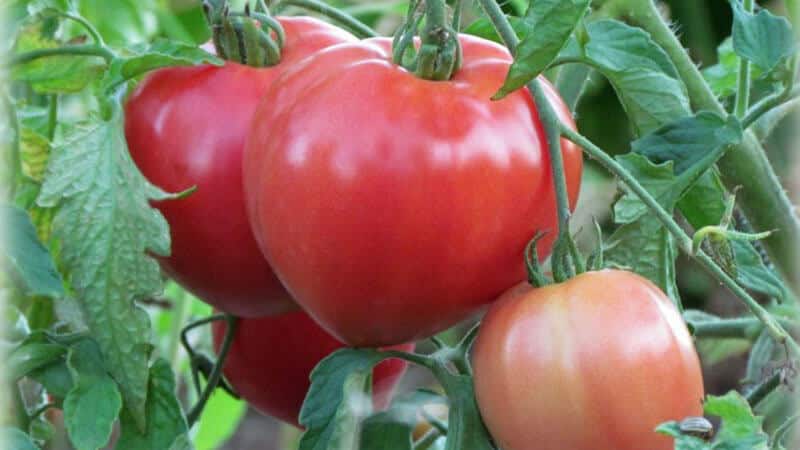
Fruit characteristics and yield
Tomatoes are round, slightly ribbed, with a small spout, shaped like a heart.The skin is bright red, dense, smooth, thin. Fleshy, juicy, sugary pulp has a small number of seeds. The taste of tomatoes is rich, sweet, with a pleasant tomato sourness. The weight of one fruit is 200-350 g.
The yield of the variety is up to 9 kg per 1 sq. m (6 bushes).
How to grow seedlings
Seeds for seedlings are sown 55-60 days before planting in the beds. For greenhouses - in mid-March, for open ground - in early April.
Seed preparation
A month before the start of agrotechnical work, seed preparation begins. Experienced farmers recommend preparing seeds in seven stages.
Calibration
The seeds are poured out of the bag and carefully inspected. Small, uneven, empty-to-the-touch seeds are thrown away, and medium/large, even seeds are placed in a saline solution. To prepare it, dissolve a tablespoon of salt in a glass of water.
After 20 minutes, the seeds floating on the surface are caught and thrown away - the likelihood that they will sprout and produce a harvest is low. The seeds that have sunk to the bottom are washed with water and dried.
Warming up
The seed material is placed in cotton bags, which are hung on a heating radiator for 10-12 days. A quick method: place the seeds on a cotton cloth on a central heating radiator. Warm-up duration is 36-48 hours.
Disinfection
Warmed seeds are disinfected with a 1% solution of potassium permanganate (add 1 g of potassium permanganate per 100 ml of water). The procedure takes 15-20 minutes.
Bubbling
The grains are placed in warm (+26…+30 °C) water, an aquarium compressor is connected (or the water is vigorously stirred every hour with a spoon). This saturates the seeds with oxygen, which improves germination and seedling growth. The duration of the procedure is 15-18 hours.
Soak
The seed material is poured with warm water (+21…+26 °C) or a solution of biostimulating preparations. With water - for 12 hours, and the drugs are used according to the instructions on the package.
Popular among farmers:
- "Zircon".
- "Epin."
- "Immunocytophyte".
Advice. Summer residents recommend “honey soaking.” To do this, dissolve 10 g (teaspoon) of honey in a glass of cool water. The grains are laid out on a cloth or gauze, 3-5 teaspoons of the solution are poured and the cloth is wrapped in an envelope. Soaking is carried out for 3-12 hours; as the material dries, it is moistened with the solution.
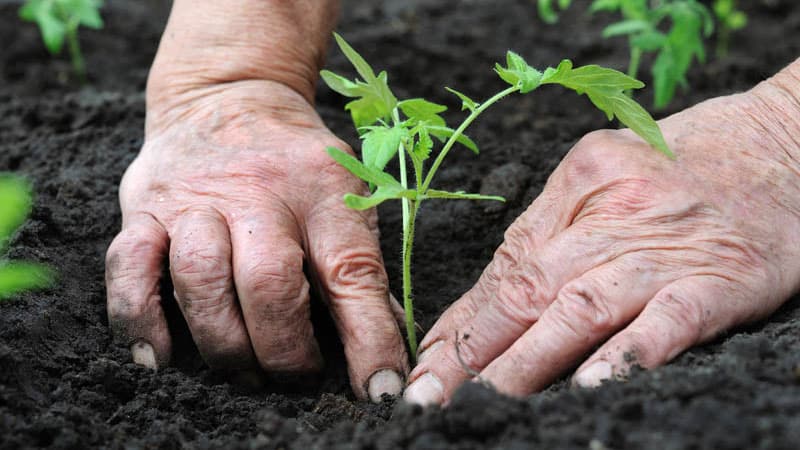
Hardening
Having wrapped the seeds in cloth and polyethylene, they are placed in a cool place with a temperature of +2 to -3 °C for 8 hours (refrigerator, balcony, summer veranda). Afterwards, leave for 8 hours in a room at room temperature. The change in temperature conditions is repeated 5-6 times.
Experienced gardeners do not recommend that beginners harden off all planting material, because if the procedure is carried out incorrectly, there is a high risk of spoiling the seeds.
Germination
The grains are wrapped in gauze or cotton cloth and placed on a flat dish (lid, saucer, Petri dish). The fabric is regularly moistened with warm water (+25… +30 °C) until embryos of 2-3 mm in size appear.
Container and soil
For Big Momma, choose a universal soil mixture, which is sold in abundance in stores.
It includes:
- humus;
- peat;
- river sand.
To make your own soil mixture, take:
- one part of the soil from the garden (from the area where cucumbers, zucchini, carrots, dill grew);
- two parts of non-acidic peat (pH 6.5);
- 0.5 parts sand (river or washed);
- one part of humus or sifted mature compost;
- a little wood ash (dolomite flour), sphagnum moss and fallen pine needles.
Plastic cups, cut-off bottles or cardboard packaging for dairy products, juices, and special containers are suitable as containers for seedlings. Before use, they are washed with a weak solution of potassium permanganate.
Sowing
The soil is laid out in containers, shallow (1-2 cm) grooves are made where the seeds are placed. The grains are dropped in, the soil is watered with warm, settled water using a spoon, syringe or spray bottle. The containers are covered with film and placed in a warm, bright place.
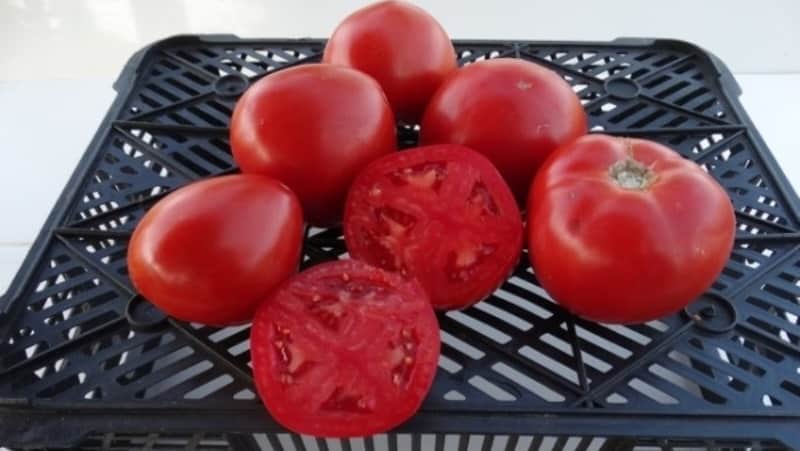
Growing and care
As soon as the seeds sprout, the film is removed.
From the author. This year I tried to plant tomatoes of this variety. The seedlings hatched on the third day after planting. They sprout together and grow quickly.
Water the sprouts as the soil dries, being careful not to wet the stem and leaves.
After a pair of true leaves appear on the plants, the seedlings are planted in separate containers. Containers are chosen with a volume of at least 300 ml.
Important! When transplanting seedlings, shorten the central root by 1–1.5 cm. This will allow the roots to develop in width.
Seedlings Fertilize every 14 days, alternating mineral and complex fertilizers. The first complex fertilizing is applied 10 days after picking.
Big Mom is a light-loving tomato, so after picking, the plants should receive light for 12 hours. If the region has short daylight hours, the seedlings are illuminated using fluorescent or LED lamps, which are placed strictly above the plantings.
At the age of 45 days, the seedlings begin to harden, taking them outside for 3-4 hours in the shade. Every day, increase the time spent outside by 1 hour and gradually accustom the plant to sunlight.A day or two before planting in the ground, the seedlings are left to spend the night in the open air.
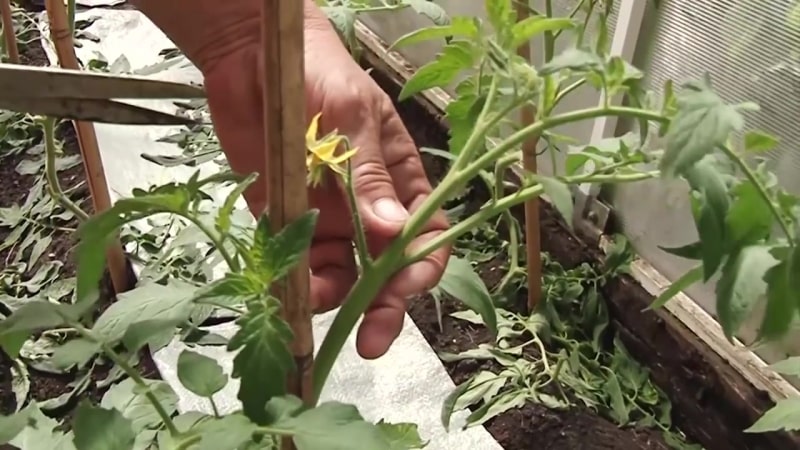
How to grow tomatoes
The seedlings are transplanted to a permanent place at the age of 55-60 days. In cold regions - only in film shelters. The soil temperature should reach +13... +15 °C, and the air temperature - +12 °C and at least +5 °C. Frosts will either destroy fragile plants or slow down the development of tomatoes for 15-20 days.
Landing
The site for future planting of tomatoes is chosen in advance. It is important that the year before this, no plants of the nightshade family grew on it, but cucumbers, zucchini, and dill are good predecessors and neighbors for tomatoes of any variety.
A day before planting seedlings, the soil is disinfected with a strong solution of potassium permanganate or boiling water. For Big Momma, choose a planting pattern of 40 x 50 cm.
Care
Tomatoes are transplanted in a greenhouse in early to mid-May; in warm regions, it is acceptable at the end of April. By this time, the seedlings have already grown from five to nine pairs of leaves, and plant growth reaches 20-25 cm. It is recommended to plant tomatoes of this variety in open ground only in warm regions of the country - a month later than under cover. In central Russia, when growing outside a greenhouse, it is recommended to cover tomatoes with agricultural material for the first 15-20 days.
A week after transshipment, the bushes tie up. Water as the soil dries, strictly at the root, avoiding moisture getting on the stem and leaves. Water for irrigation is pre-settled and heated in the sun. After each watering, loosen the soil and remove weeds. At the moment of fruit formation, plants need abundant soil moisture, but as soon as the green fruits begin to turn red, watering is reduced.
Fertilizers are applied every 10-12 days, alternating complex and mineral. Before flowering, tomatoes are fed with nitrogen fertilizers, and during the flowering phase - with potassium fertilizers. Foliar feeding will help increase productivity: wood ash, solution boric acid. After fertilizing the tomatoes, abundantly watered.
Gradually, the lower leaves are plucked from the bush so that they do not take away useful substances from the ovaries and do not contribute to the spread of infections and harmful insects.
Bushes form 2-3 stems. The photo below shows the diagram: main shoot + 1-2 stepsons. The remaining branches are removed. Stepsoning carried out once a week, removing no more than two stepsons at a time. As the bush develops, each branch is tied up so that the heavy fruits do not break or knock the plant to the ground.
Advice. Experienced summer residents advise removing a pair of unripe fruits from each inflorescence. In this case, those remaining on the branch will receive more nutrients and grow larger.
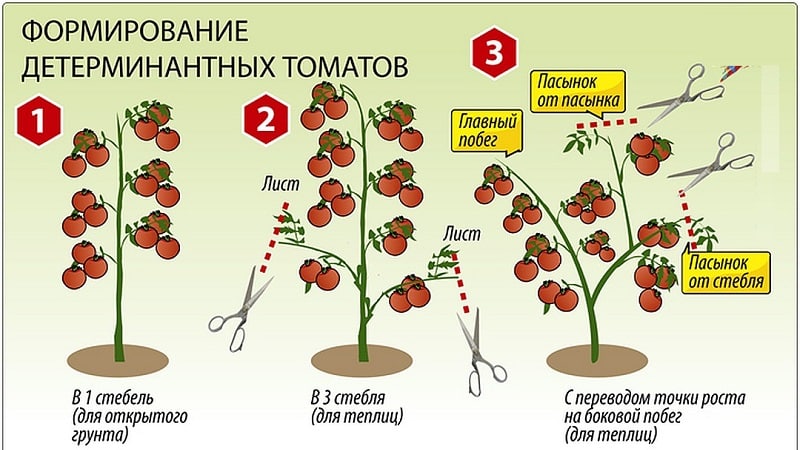
Features of cultivation and possible difficulties
As noted by farmers who have already tried to grow Big Mom tomatoes, there are no difficulties or peculiarities in growing this variety.
Diseases and pests
On the packaging, manufacturers indicate that tomatoes are highly resistant to fungal diseases and pests.
To prevent and treat fungal diseases, plantings are treated with Fitosporin. Brown olive spot (cladosporiosis) is treated with copper-containing drugs, for example, “Bordeaux mixture” or “Barrier”, blossom end rot – by spraying with calcium nitrate.
Advice. In regions with short, cool or rainy summers, tomatoes under the film are affected late blight. Whey is used to prevent the disease. Immediately after transplanting the seedlings into the ground, the bushes are sprayed with whey (with a fat content of no more than 1% - otherwise you can burn the leaves). The procedure is repeated every 10 days. To prevent blossom end rot, the soil is fertilized with eggshells and onion peels.
Tomatoes are attacked by harmful insects. For aphids and thrips they use the drug "Bison", for the Colorado potato beetle - "Prestige", for whiteflies - "Confidor", for spider mites - "Apollo".
The nuances of growing in open ground and greenhouses
Summer residents note that in regions with a cold, cool climate, tomatoes will not produce a high yield when grown in open ground. Without shelter they are grown only in the southern regions.
In greenhouse conditions, the bush is formed into 1 main and 1-2 stepsons, in open beds into 1 main and 1 stepsons.
In greenhouses, tomatoes are watered only in the morning. Shelters are ventilated, not allowing humidity to rise above 80%. At a higher rate, the pollen in the inflorescences sticks together and the plants are not pollinated.
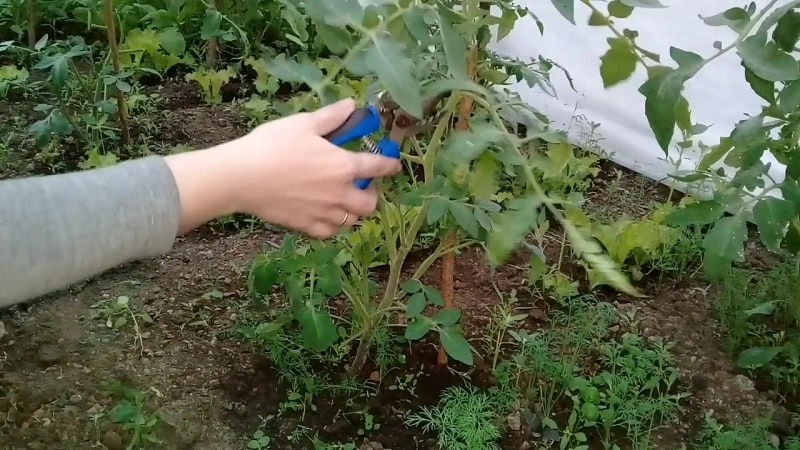
Harvesting and application
Tomatoes ripen 85-90 days after germination. The weight of the fruit varies from the bottom to the top of the bush: the lower ones up to 400 g, the upper ones - 150-200 g.
They are consumed fresh: in salads, sandwiches. The variety is suitable for making juices, purees, sauces and snacks. Small fruits can be preserved whole. The thick skin prevents the tomatoes from cracking, making them suitable for transportation. The keeping quality is high; according to farmers, the fruits are stored until late autumn.
Important! Picked unripe, tomatoes take several weeks to arrive in a dark, dry place.
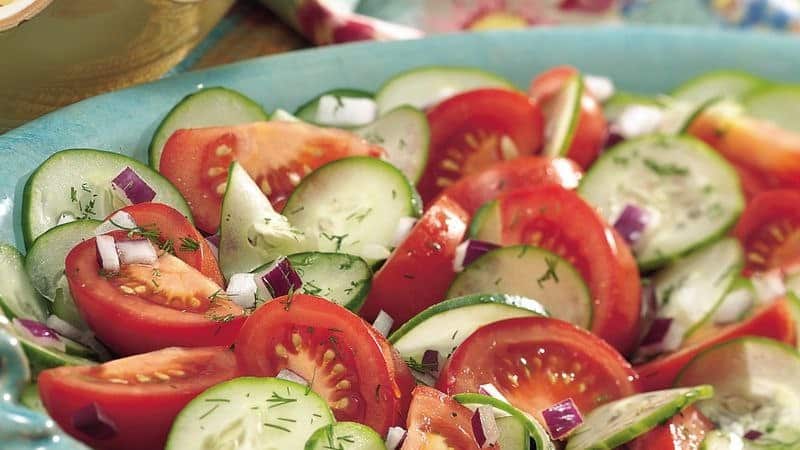
Advantages and disadvantages of the variety
Among the advantages of the variety are:
- yield – up to 9 kg per sq.m;
- weight of one tomato - 300 g;
- taste – sweet, with pleasant tomato sourness;
- early fruit ripening;
- ability to withstand long-term storage and transportation;
- immunity to diseases and pests;
- opportunity to collect seed material.
The disadvantages include the impossibility of growing in open ground in the northern regions of Russia.
Farmer reviews
Gardeners choose the Big Momma tomato for its ease of care, immunity to fungal diseases, taste and yield.
Elena, Novoaleksandrovsk, Stavropol Territory: “Last summer we tried to plant a new tomato variety, Big Mom. We liked it. They planted bushes both under cover and in the garden. In the greenhouse, the fruits ripened a week earlier. The tomato showed its valuable qualities: early, large, and withstood transportation well. Let's plant!"
Alexander, Volgograd region: “The variety performed well in the garden. A garter is required, the fruits are heavy. Loves watering. The outer row was not always well irrigated; the difference in the size of the tomatoes is visible. I always keep the stem without the lower leaves, insects or infections do not bother me. I did preventive maintenance with low-fat milk every week, especially after the rains.”
Ruslan, Tula: “I have my own agricultural company and a year ago the technologists suggested planting this variety as a test one. This year they increased the number of bushes - the tomatoes store well, they are quickly sold out - customers like the taste and appearance. They tolerate transportation well, we harvest the crop a little unripe - this way storage can be extended for another two weeks.”
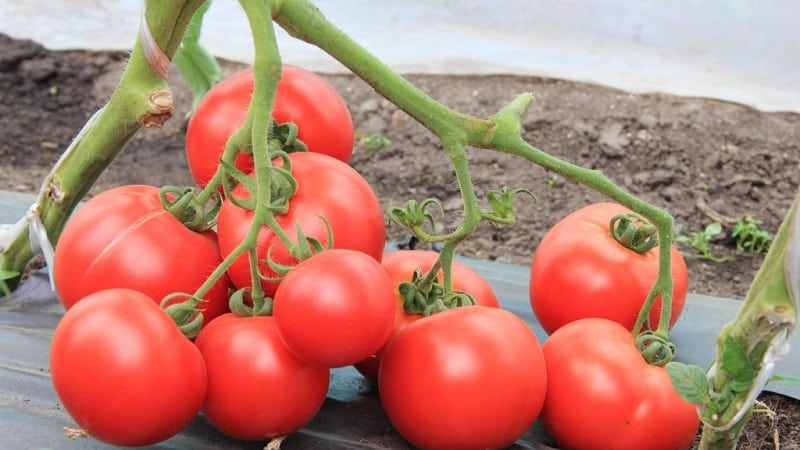
Conclusion
Varietal tomatoes Big Mommy are a godsend for lovers of large-fruited tomatoes.The best harvest can be obtained in hot, moderately rainy summer conditions in open ground, in the northern regions only under cover. The agricultural technology is the same as for other varieties of tomatoes, however, summer residents note that tomatoes like to be watered with warm water.
Low bushes are pinched, formed into 2-3 stems and necessarily tied to supports. The fruits ripen at 85-90 days. The tomatoes are large, sweet in taste, with pleasant tomato acidity and juicy fleshy pulp. Universal use: added fresh to salads, juices, sauces and snacks for the winter. They do not deteriorate during transportation and long-term storage.